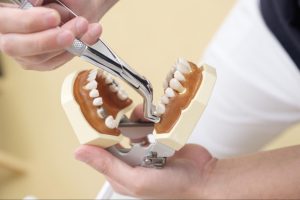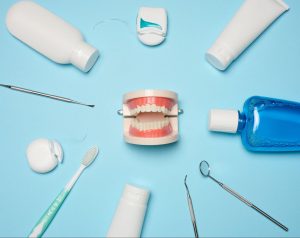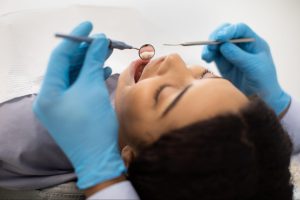Living with TMJ disorders can feel like an unrelenting challenge. The persistent discomfort in your jaw, face, and neck can affect daily routines. Simple activities like talking, chewing, or even smiling can become distressing. With the correct information, finding effective treatments for TMJ can change everything. Understanding your options is the first step toward reclaiming comfort and control over your life.
What is TMJ?
TMJ is the temporomandibular joint that connects the lower jaw (mandible) to the skull near the ears. This joint is essential for everyday movements like chewing, speaking, and opening or closing your mouth. When issues arise in the joint or surrounding muscles, they are collectively referred to as TMJ disorders (or TMD). These disorders can cause pain, stiffness, limited jaw movement, or clicking sounds when the jaw is in use. TMJ problems are often linked to stress, misalignment, teeth grinding, or injury, but the exact causes vary between individuals.
Effective Treatments for TMJ: What You Need to Know
Finding relief from TMJ disorders starts with the right approach. These conditions impact millions, but targeted solutions can restore comfort and ease. Knowing the available treatments is crucial to regaining control and improving quality of life. With the right plan, relief from TMJ pain is within reach.
Non-Invasive Treatments for TMJ
Managing TMJ symptoms often starts with non-invasive methods. These treatments reduce pain and improve jaw function without requiring surgical or medical interventions. They are typically safer and offer great results for many individuals when applied consistently.
Lifestyle Modifications
Minor changes to daily habits can significantly improve TMJ relief. Reducing stress levels helps minimize jaw clenching and grinding, which are common triggers for TMJ pain. Avoiding hard or chewy foods and adopting a soft diet can ease strain on the jaw. Limiting extreme movements like wide yawning or gum chewing also prevents further irritation. Together, these lifestyle changes create a more stable and less painful experience.
Physical Therapy and Exercises
Targeted exercises can strengthen and relax the jaw muscles, providing noticeable relief. Physical therapy can also improve joint alignment and reduce stiffness. Heat therapy soothes tight muscles, while cold packs can numb acute pain. Many find relief through tools like home jaw exercisers or mouthguards. Incorporating these practices builds resilience and improves jaw mobility over time.
Oral Appliances and Splints
Oral appliances are custom-fitted devices that help alleviate TMJ symptoms. Splints, a common type, help reposition the jaw and reduce grinding at night. Dentists adjust these devices to each individual’s needs for maximum comfort. Wearing an oral appliance can also protect the teeth from wear caused by clenching. These tools provide an effective and non-invasive way to reduce pain and improve function.
Medical Interventions for TMJ
When symptoms persist despite non-invasive measures, medical interventions may be necessary. These treatments focus on addressing the underlying causes or directly relieving discomfort. Depending on the severity, they range from medications to advanced surgical procedures.
Medication Options
Medications offer a straightforward solution for TMJ pain management. Over-the-counter pain relievers, like ibuprofen, reduce inflammation and swelling. For more severe cases, doctors may prescribe muscle relaxants or more potent painkillers. Some medications also improve sleep quality by reducing nighttime clenching. Discussing side effects and proper usage with a healthcare provider is essential.
Injections for TMJ Pain Relief
Injections provide targeted relief for TMJ symptoms, often with long-lasting results. Botox® relaxes overactive jaw muscles, reducing pain and tension. Corticosteroid injections address inflammation directly within the joint. These treatments require skilled professionals for safe and effective administration. Many patients report significant improvement in function and comfort after just one session.
Surgical Options for Severe Cases
Surgery becomes an option when conservative treatments fail to provide relief. Arthroscopy, a minimally invasive procedure, addresses joint issues using small incisions. Open-joint surgery is a more comprehensive approach to correcting structural abnormalities. Recovery times vary depending on the procedure’s complexity. Surgery is typically reserved for individuals with severe, persistent TMJ disorders.
Alternative and Complementary Treatments for TMJ
Alternative therapies offer additional ways to alleviate TMJ symptoms. Many people explore these methods to complement traditional treatments or seek holistic approaches. They can effectively reduce tension and improve overall jaw health.
Acupuncture and Massage Therapy
Acupuncture targets specific points to alleviate TMJ-related pain and tension. This ancient practice is believed to restore balance in the body and promote relaxation. Massage therapy focuses on the muscles surrounding the jaw, reducing tightness and discomfort. Both methods improve blood flow, aiding the body’s natural healing process. While evidence varies, many find these approaches beneficial.
Dietary Supplements and Herbal Remedies
Certain supplements may help reduce inflammation and support joint health. Omega-3 fatty acids, magnesium, and turmeric are common examples. Herbal teas like chamomile can promote relaxation, reducing nighttime jaw clenching. It’s crucial to consult a healthcare provider before starting any new supplement. Despite limited research, these remedies remain popular among TMJ sufferers.
Biofeedback and Stress Reduction Techniques
Biofeedback trains individuals to control physical responses, such as muscle tension. For TMJ, this means learning to relax the jaw and surrounding muscles. Stress reduction techniques, like mindfulness and breathing exercises, also alleviate jaw tension. Incorporating these practices can improve mental well-being and physical symptoms. Consistent use enhances the body’s natural ability to cope with stress.
Innovative Treatments for TMJ Disorders
New approaches to TMJ treatment are making significant strides. These cutting-edge solutions aim to address the root causes of TMJ disorders more effectively. By incorporating modern technology and advanced medical research, they offer hope for those who haven’t found relief with traditional methods.
Regenerative Medicine for TMJ
Regenerative medicine is gaining attention for its potential to heal TMJ disorders. Stem cell therapy, for instance, is being explored to repair damaged joint tissues. Platelet-rich plasma (PRP) therapy is another promising treatment, using the patient’s blood components to promote healing. These therapies are still experimental but show great promise in clinical trials. They aim to reduce pain, restore function, and slow joint degeneration naturally.
Neuromodulation Devices
Neuromodulation devices are non-invasive tools that target the nervous system to alleviate TMJ pain. These devices send electrical impulses to calm overactive muscles and reduce discomfort. Portable and user-friendly, they allow patients to manage symptoms at home. Clinical studies suggest these devices can significantly improve the quality of life for chronic sufferers. As technology advances, these tools are becoming more accessible and practical.
Advanced Oral Appliance Technologies
Oral appliances have evolved with advancements in 3D printing and digital modeling. These innovations allow for precise customization based on a patient’s jaw structure. Modern appliances are designed for improved comfort, durability, and effectiveness. Some devices also incorporate sensors to monitor usage and provide feedback. These
advancements ensure better outcomes for patients managing TMJ disorders.
Multidisciplinary Approach to TMJ Treatments
A multidisciplinary approach offers a comprehensive way to manage TMJ disorders. TMJ treatment often requires input from various healthcare professionals to address its diverse symptoms. This collaborative method improves the chances of long-term relief and recovery.
Role of Dentists in TMJ Care
Dentists play a crucial role in diagnosing and treating TMJ disorders. They design oral appliances, provide bite adjustments, and assess dental issues contributing to jaw pain. Regular dental evaluations can identify early signs of TMJ problems. By addressing these issues promptly, dentists help prevent symptoms from worsening. Their expertise is integral to effective TMJ care.
Contributions of Physical Therapists
Physical therapists specialize in improving jaw function through targeted exercises and treatments. They teach patients techniques to strengthen and relax jaw muscles. Therapists may also use manual therapy to realign the jaw and reduce stiffness. Heat and cold therapy, often recommended by therapists, can provide immediate relief. Their guidance is key to restoring mobility and reducing pain.
Psychological Support for TMJ Patients
TMJ disorders often have a psychological component linked to stress and anxiety. Mental health professionals help patients manage stress through counseling or cognitive-behavioral therapy (CBT). Relaxation techniques like mindfulness and guided imagery can also reduce jaw tension. Addressing the emotional impact of chronic pain is essential for overall well-being. A holistic approach ensures that patients feel supported both physically and mentally.
How to Choose the Best Treatments for TMJ
Selecting the proper TMJ treatment requires careful consideration. Each person’s symptoms, lifestyle, and resources play a role in this decision. Personalized plans often deliver the most effective and sustainable results.
Factors to Consider
Key factors are the severity of symptoms and their impact on daily life. The cost and accessibility of treatments may also influence choices. Long-term effectiveness should weigh heavily in the decision-making process. Consulting with professionals ensures the chosen path aligns with individual needs and goals.
Combining Treatments for Better Results
Combining treatments can amplify the benefits and address multiple symptoms. For example, oral appliances paired with physical therapy often yield excellent results. Stress management techniques can complement medical interventions. Personalized plans that combine methods improve outcomes and enhance comfort. Many patients find tremendous relief in a multifaceted approach.
Consultation With Professionals
Working with medical or dental experts is essential for effective treatment. Professionals tailor plans based on individual needs and monitor progress. Regular follow-ups ensure that the chosen methods remain effective. Their expertise provides guidance and confidence on the path to recovery.
Reclaiming Comfort Through TMJ Treatments
Your path to relief from TMJ pain begins with informed decisions and the courage to act. Every small step, whether exploring innovative treatments or seeking expert guidance, brings you closer to a life free from discomfort. The options are vast, and there’s a solution that fits your unique needs. Don’t let TMJ hold you back from enjoying the simple joys of life—start prioritizing your well-being today and rediscover the comfort you deserve.
Don’t let TMJ hold you back. Explore our Meader Family Dentistry blog for effective treatments, and start your journey to relief today.






